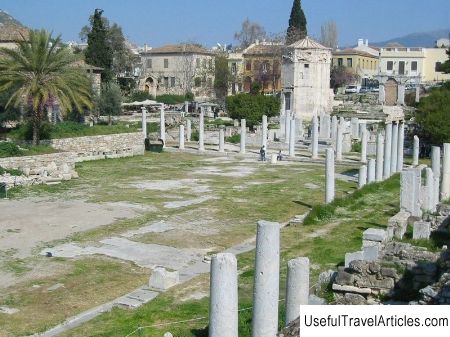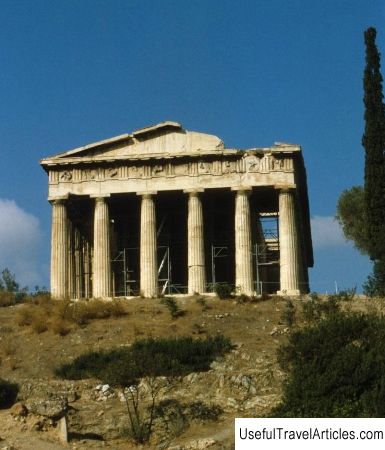Roman Agora description and photos - Greece: Athens
Rating: 8,6/10 (890 votes) 
Roman Agora description and photos - Greece: Athens. Detailed information about the attraction. Description, photographs and a map showing the nearest significant objects. The title in English is Roman Agora. Photo and descriptionIn the second half of the 1st century BC. the Romans launched a large-scale construction in Athens. New structures have also appeared on the territory of the city agora, as well as in its vicinity. It is worth noting that a number of agora outlets were demolished on purpose, and new public buildings were erected in their place. A significant reduction in retail space in the context of rapidly developing commerce has become a rather serious problem for the city, and it was decided to build a new trading floor. The plans were approved by Julius Caesar (who also financed the project) and construction began, but due to the civil wars and the economic crisis, the project was suspended. A new round of construction began around the 11th year BC. with the financial support of Octavian Augustus. The new market was built about 100 m east of the old agora and was called the Agora of Caesar and Augustus, or simply the Roman agora. For a long time, the Roman agora was exclusively a trading platform, but in the 3rd century A.D. became also the political and administrative center of the city. The Roman agora was a huge rectangular square (111x98 m) surrounded on four sides by an Ionic colonnade, behind which were shops and warehouses. The central entrance known as the Gate of Athena Archegetis was located on the western side of the agora, there was also an entrance on the eastern side - the Eastern Propylaea. Near the east entrance in the 1st century AD the administrative center of the agora Agoranomeyon and the so-called Vespasillon (public toilet) were built. The Roman agora was excavated by archaeologists in the 20th century. Unfortunately, most of this ancient structure has not survived to this day, but you can still see fragments of the colonnade, the Gate of Athena Archegetis, several columns left from the eastern gate and the remains of a Roman fountain on the south side of the agora. In the northern part of the agora, the Fethiye Mosque rises today, built in the 17th century on the ruins of an old Christian temple. The well-preserved Tower of the Winds or the Clock Tower of Andronicus of Kirk is also considered a part of the architectural ensemble of the Roman agora.     We also recommend reading Tassili n'Ajjer description and photos - Algeria Topic: Roman Agora description and photos - Greece: Athens. |




